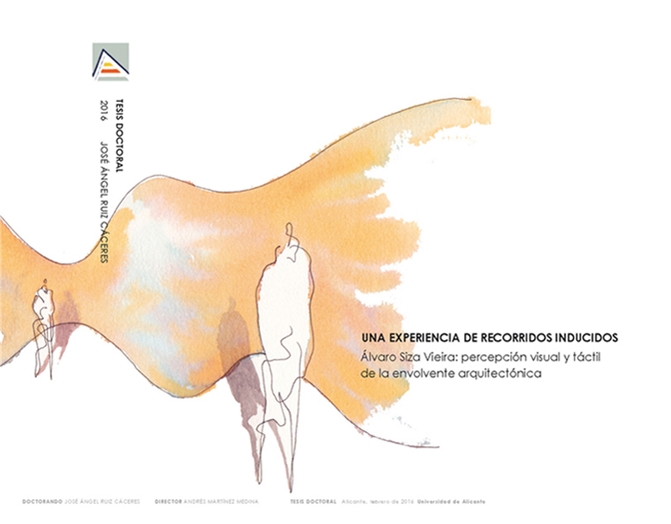Si la arquitectura moderna se ha esforzado en ofrecer medios para que podamos articular las visiones parciales que obtenemos durante nuestras vivencias arquitectónicas, gran parte de los espacios arquitectónicos de Álvaro Siza Vieira nos proponen la construcción mental de su conjunto desarrollada a lo largo de una experiencia de recorridos inducidos: su madurez arquitectónica ha sabido articular conjuntamente la percepción visual con la percepción táctil. De este modo, logra alcanzar su necesitado objetivo: inducir nuestro desplazamiento físico hacia adelante en pos de arribar a un `ámbito posicional de alcance’ establecido con anterioridad mediante los trazos dinámicos de su propia mano -a veces consciente y otras intuitivamente-. El caminar del hombre a través de la envolvente arquitectónica que propone el recorrido inducido se asemeja a cómo fluye el agua en movimiento, a cómo recorre una senda y horada la roca de la montaña en su discurrir, a cómo se acelera cuando se facilita una pendiente descendente o cuando el río se condena en canal cerrado aumentando su velocidad y, sin embargo, se desacelera cuando se aproxima a su encuentro con el mar... la entrada principal.
Los espacios arquitectónicos de Álvaro Siza Vieira basan su composición en la adición y articulación de superficies -fragmentación compositiva- que materializan escenarios para la acción, organizando y proponiendo, así, el desplazamiento de la figura del hombre. Cada una de dichos escenarios nos propone un recorrido inducido, mientras que, mediante la adición de distintos escenarios solapados consigue establecer una secuencia ordenada de recorridos inducidos. La cadena de inducción se inicia con la aproximación a la envolvente arquitectónica exterior, es continuada con la íntima acción del tránsito en la entrada principal y prosigue en el espacio interior hasta alcanzar la cubierta, un espacio interior de fuerte identidad -como es el caso de la Biblioteca en la FAUP- o retorna, de nuevo, a la entrada principal.
Los episodios creativos de aSV se desarrollan a lo largo de tres estadios sucesivos: en una primera fase, su obra se dibuja articulando, secuencialmente, los espacios arquitectónicos de manera que, la proyección del cuerpo humano y su movimiento a través de ellos, definen la envolvente arquitectónica; en una fase posterior, la materialización de rastros perceptuales, dejados por su mano intuitiva, retroalimenta nuestra percepción visual y táctil, haciendo aflorar así el movimiento perceptual que aquéllos nos ofrecen; en una última fase, nuestra mente los interpreta para, seguidamente, darles continuidad por medio de las huellas de nuestros pasos a través de una experiencia de recorridos inducidos.
Para constatar este modo de experimentar la arquitectura, durante la Tesis, se ha procedido a:
1) mantener una entrevista personal en Oporto con el propio Álvaro Siza Vieira donde asegura que el movimiento perceptual y la inducción están presentes en su obra desde su primer proyecto y
2) utilizar el método de ‘demostración por sustracción’ para poder desgranar, en 3 obras concretas de Siza (la FAUP, el Pabellón Carlos Ramos y la sede de la Sucursal del Banco Borges e Irmao) que, cuando eliminamos perceptos de movimiento de la envolvente arquitectónica, las trayectorias perceptuales, es decir la inducción de movimiento, se modifican hasta diluirse.
Como conclusiones, se obtiene:
- que existen ciertos Mecanismos Inductores (MI), que fomentan nuestro desplazamiento en el espacio arquitectónico,
- que el recorrido inducido se nos presenta como una alternativa para nuestra experiencia del espacio arquitectónico, desarrollándose como evolución del paseo arquitectónico,
- que la Facultad de Arquitectura de la Universidad de Porto -FAUP- constituye el ejemplo más relevante de la puesta en práctica de una arquitectura de recorridos inducidos que operan secuencialmente hasta alcanzar un objetivo común: la puerta de entrada principal.





